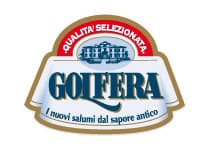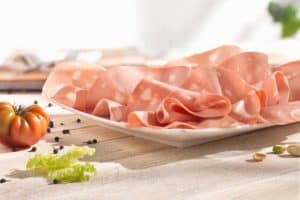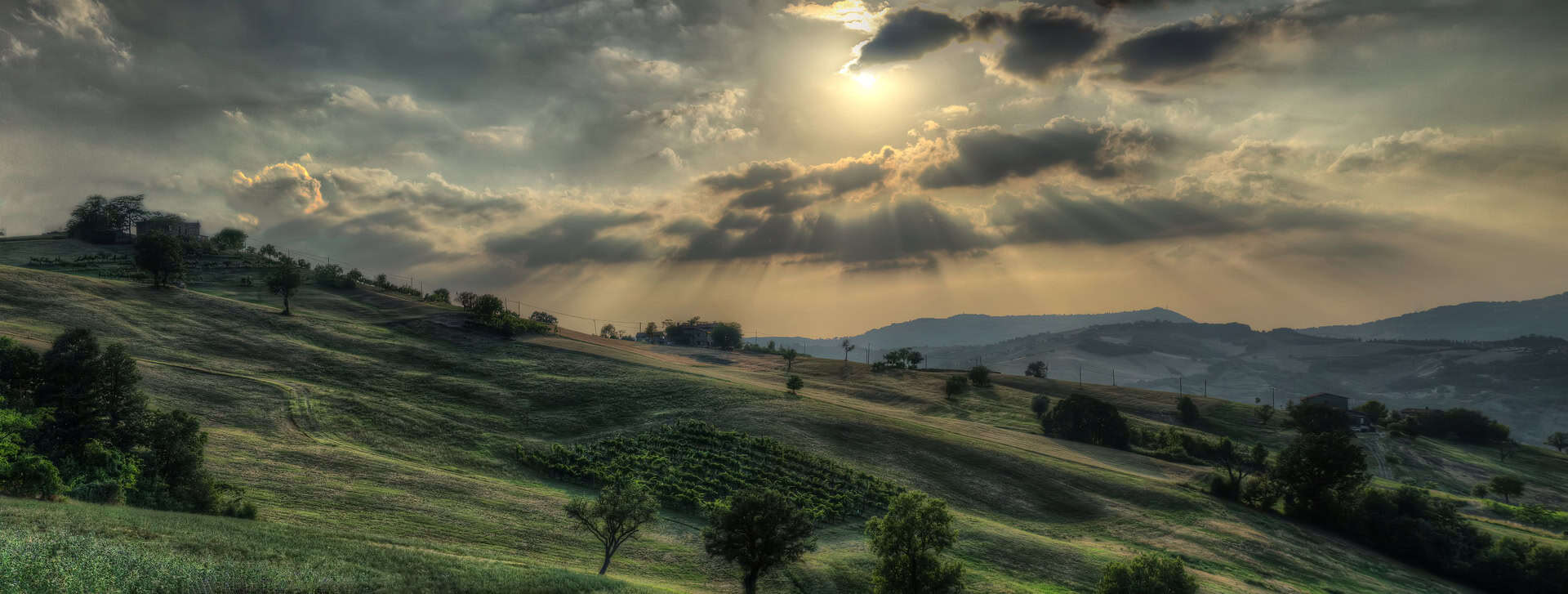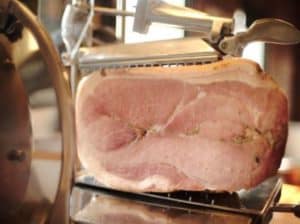Deep silence and wide-eyed stares often follow the first delicate, velvety taste as the flavors of coriander, white pepper and anise unfold.
All over the United States, time and time again, Italian expatriate chefs finally find the words which are always a variation on the same sentiment: “I am brought back to my childhood. To sit and eat this here in the USA, I am without words.” 
You see, it’s kind of a big deal to get really good, authentic made-in-Italy mortadella here in the U.S. There’s a long history of legal red tape when it comes to importing meats into the U.S. Bans have been implemented and lifted over the course of decades, but Italian-made mortadella has only recently made the cut. After much petitioning of U.S. food government agencies –and a fair of amount of patient waiting (ok, maybe not always so patient) — the moment has arrived!
 Last year, we here at Rogers Collection added Golfera’s imported mortadella to our product line. The classic Bologna salumi is traditionally seasoned and available with or without Sicilian pistachios as well as con Trufa, with pieces of black winter truffles from local mountains and a white truffle paste. Yes, please! Of course the recipe honors the classic mortadella qualifications of a meat to fat ratio of seven to three. I mean, fat is flavor, right? And don’t worry; it’s the good fat, like olive oil. And it better have fat if it hails from the town of Bologna which is lovingly nicknamed la grassa, meaning fat.
Last year, we here at Rogers Collection added Golfera’s imported mortadella to our product line. The classic Bologna salumi is traditionally seasoned and available with or without Sicilian pistachios as well as con Trufa, with pieces of black winter truffles from local mountains and a white truffle paste. Yes, please! Of course the recipe honors the classic mortadella qualifications of a meat to fat ratio of seven to three. I mean, fat is flavor, right? And don’t worry; it’s the good fat, like olive oil. And it better have fat if it hails from the town of Bologna which is lovingly nicknamed la grassa, meaning fat.
Speaking of Bologna, let’s have a little history. I’ll keep it short, I promise. It’s a sort of a quick mortadella/Golfera history combination.

Mortadella has deep-rooted history and strict production standards dating back to ancient Roman times. During the Middle Ages, the pork preserving people (that’s a mouthful!) formed the powerful Guild of Salaroli which monitored the process of making mortadella ensuring it adhered to quality standards. Then, in 1661, a Cardinal representing the Pope in Bologna passed a law forbidding counterfeit production of mortadella; it needs to be certified by the massaro to guarantee the official recipe.
This prized salumi was once more expensive than prosciutto, ham, bread or olive oil, mainly due to the fact that originally production was done with a labor-intensive mortar to crush together the meat and spices. Once mechanized production took over, mortadella was made more efficiently and cost-effectively, making it available to more than just the wealthy folks. But the stringent guidelines and specific recipe never changed.
Golfera honors this long and proud history of a region famous for charcuterie. And at the same time, Golfera is introducing a few modern elements: exploring contemporary eating habits and consumer trends; using innovative, eco-friendly packaging; and drawing on renewable resources for production.
Taking into account mortadella’s lengthy history, Golfera—founded in 1960 in the small, ancient village of Lavezzola in the Emilia-Romagna region near Bologna—is a budding business. But it is one that builds on the shoulders of giants, so to speak.

This region holds deep bonds between landscape and food. All the many steps leading up to production occur within a few kilometers of the Lavezzola facility which allows for the lowest possible environmental impact. The pigs are raised without antibiotics after their third month, and they are happy pigs, too! Golfera is committed to animal welfare which includes no-stress feeding and breeding. The pork used in the meats for the Rogers Collection comes from a single farm of Italian-born pigs selected exclusively for our product!
The mortadella is made with fresh, high quality cuts of shoulder meat (no tripe or lesser cuts), delicious lardo from the neck of the pig, and warm, aromatic spices. Those are all the things you want! And Golfera doesn’t add any of the things you don’t want. The mortadella is made with genuine “clean labels,” which means no preservatives, dairy, monosodium glutamate, nitrates or nitrites, or gluten.
All of this is done by drawing 100% of the electricity required from renewable resources.
I mean, come on, this is the wave of the future, right? It is the perfect blend of ancient tradition, modern thinking and technical know-how. The result is what matters: a truly delicious mortadella, made today, but so reminiscent of older days, it can make you weep from nostalgia.
I think Golfera’s work here is done.
 Oh wait, did I mention we also added to our catalog Golfera’s Braceri—a grilled ham layered with a bouquet of fennel, rosemary, coriander, anise, caraway and clove? If you’re not an herb kind of person, there’s the Gran Romagna without herbs. Both are slow cooked for 17 hours.
Oh wait, did I mention we also added to our catalog Golfera’s Braceri—a grilled ham layered with a bouquet of fennel, rosemary, coriander, anise, caraway and clove? If you’re not an herb kind of person, there’s the Gran Romagna without herbs. Both are slow cooked for 17 hours.
Well, more on that later.
Who knows what more we will see from Golfera!
Until then, mangiare e godere la mortadella!
Written by Leska Tomash